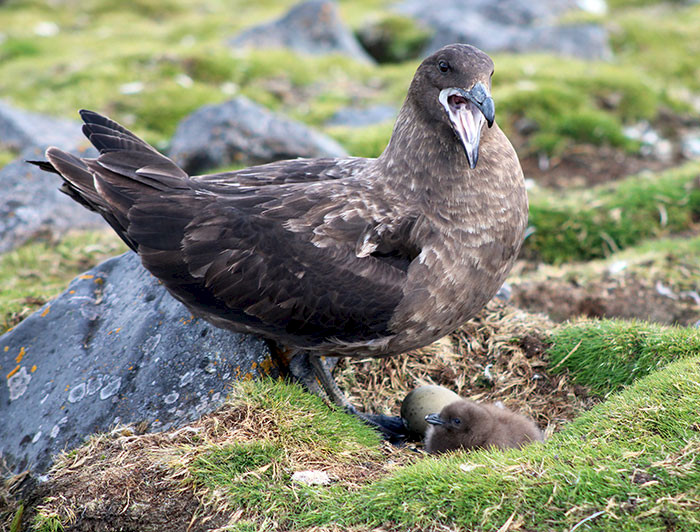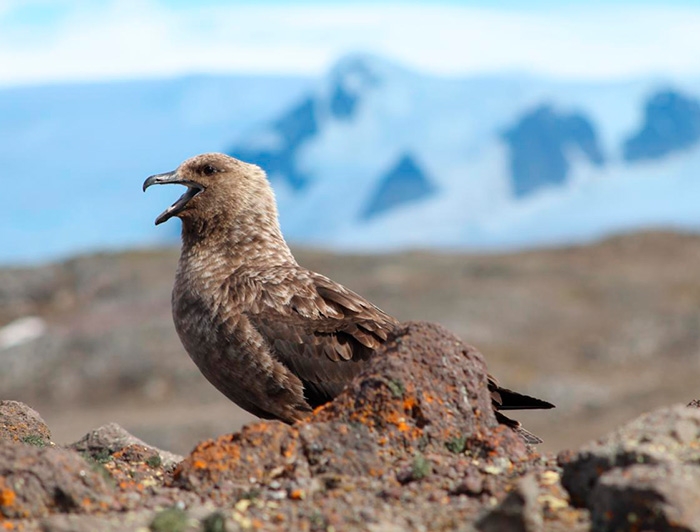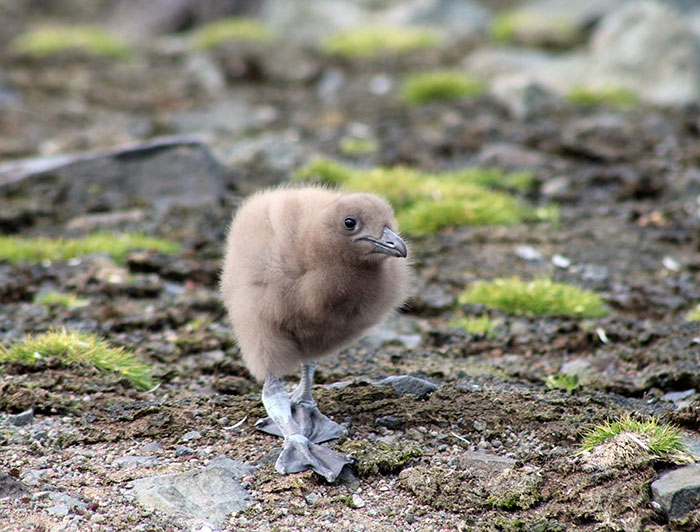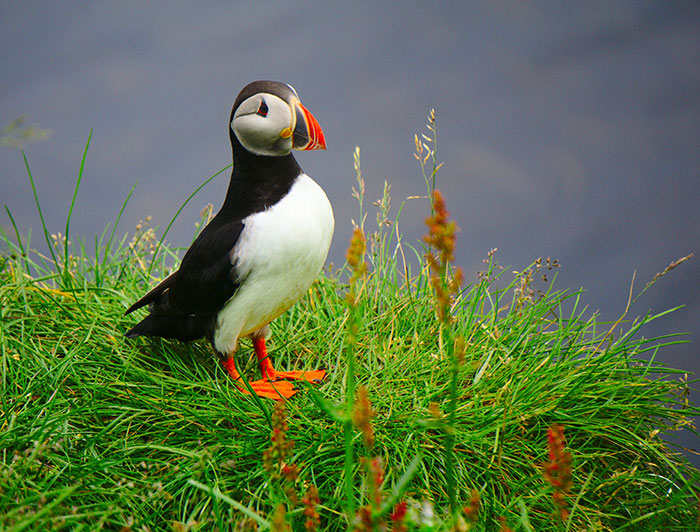Three seabird species from the southern hemisphere are adapting to the extreme environments of the Antarctic. This is done by genetic introgression, an evolutionary process that allows the incorporation of genes from one species to another through hybridization.
This is the result of a study published in Molecular Biology and Evolution magazine, led by Juliana Vianna, professor from the Faculty of Biological Sciences, Alternate Director of the Millenium Institute Center for Genome Regulation (IM-CRG, as per its Spanish acronym) and researcher at the Millenium Institute BASE. This work was developed in collaboration with Ph.D. students Josefina Jorquera and Lucila Morales, and it is part of a project funded by the Chilean Antarctic Institute (INACH, as per its Spanish acronym).
The protagonists of this research are three Skua species (seabirds of prey): the Chilean skua (Stercorarius chilensis), found in Chile, Argentina, and the Falkland Islands; the South polar skua (S. maccormicki), which is present around the Antarctic; and the Brown skua (S. antarcticus), found in the Antarctic peninsula and on subantarctic islands.
Using high coverage genome sequencing in more than 100 specimens collected from South America to the Antarctic, the researchers managed to rebuild the evolutionary history of these species, to identify genetic mixing among them, and to discover signs of adaptation to polar climates.
The subjects of this research are three Skua species: the Chilean skua (Stercorarius chilensis), the South polar skua (S. maccormicki), and the Brown skua (S. antarcticus.) (Photo credit: Daly Noll)
Introgression: A Way toward Adaptation
The research documents the geographical regions where these species meet and produce hybrid offspring, particularly in the Antarctic peninsula and up to the subantarctic Bouvet Island. In these hybrid individuals, researchers detected genes associated with key functions related to cold climate survival, such as lipid metabolism, temperature regulation, and reproductive processes.
These results suggest that genetic introgression plays a key role in the capacity of these birds to adapt to and inhabit new environments, especially in the context of global warming. As opposed to pure populations, admixed individuals show higher genetic diversity and a higher presence of genes that favor physiological adaptation to low temperatures.
Results suggest that genetic introgression plays a key role in the capacity of these birds to adapt to and inhabit new environments, especially in the context of global warming. (Photo credit: Daly Noll)
Projections in view of Climate Change
The authors of the study also developed ecological distribution models that project different climate scenarios. These results indicate that admixed populations could widen the range of their distribution in the Antarctic by the year 2100, while some non-admixed populations (like the Chilean skua) could reduce their presence in the southern end of South America.
This work emphasizes the importance of considering hybridization as a relevant evolutionary mechanism, especially in regions where the boundaries between species overlap and environmental conditions change rapidly. Furthermore, this study reinforces the value of large-scale genomic studies as a tool for understanding the processes of biological adaptation.
“(…) Understanding these mechanisms is fundamental not only to understand how these species respond to new challenges, but also to predict which lines of descent have higher genetic resiliency to adapt to future ecosystems” – Juliana Vianna
Evolutionary Convergence
Four other species of skua that reproduce in the Arctic region are currently under study and are being compared with the three Antarctic species already researched. Comparisons are also being made between the convergent adaptations found in birds of the Alcidae family in the Arctic (like puffins and razorbill birds, among others), as well as penguins in the Southern Ocean.
This research was coordinated by Chilean institutions, and it included academics from UC Chile, Universidad Andrés Bello, and the Millenium Institutes BASE and CRG, along with research centers from Australia, Europe, and South Africa.
The team is also comparing convergent adaptations for birds from the Alcidae family in the Arctic (puffins, razorbill birds and others) to penguins in the Antarctic. (Photo credit: Unsplash)
As scholar Juliana Vianna explains, “what is fascinating about this study is that it reveals how evolution does not always progress in a lineal or isolated way. Through genetic introgression, that is, the incorporation of genes from one species to another through admixture, we see that skuas are gaining key adaptive tools to survive in extreme polar environments. Genes related to lipid metabolism, temperature regulation, or reproduction do not appear by random chance. They are being selected because they give a concrete physiological advantage over the cold climate.”
“From the lens of molecular biology, these results are a window into adaptative processes in a short evolutionary time. Hybridization, which for years was considered an anomaly, is being understood today as an evolutionary force. In a context of accelerated climate change, understanding these mechanisms is fundamental not only to understand how these species respond to new challenges, but also to predict which lines of descent have higher genetic resiliency to adapt to future ecosystems,” the researcher concluded.



